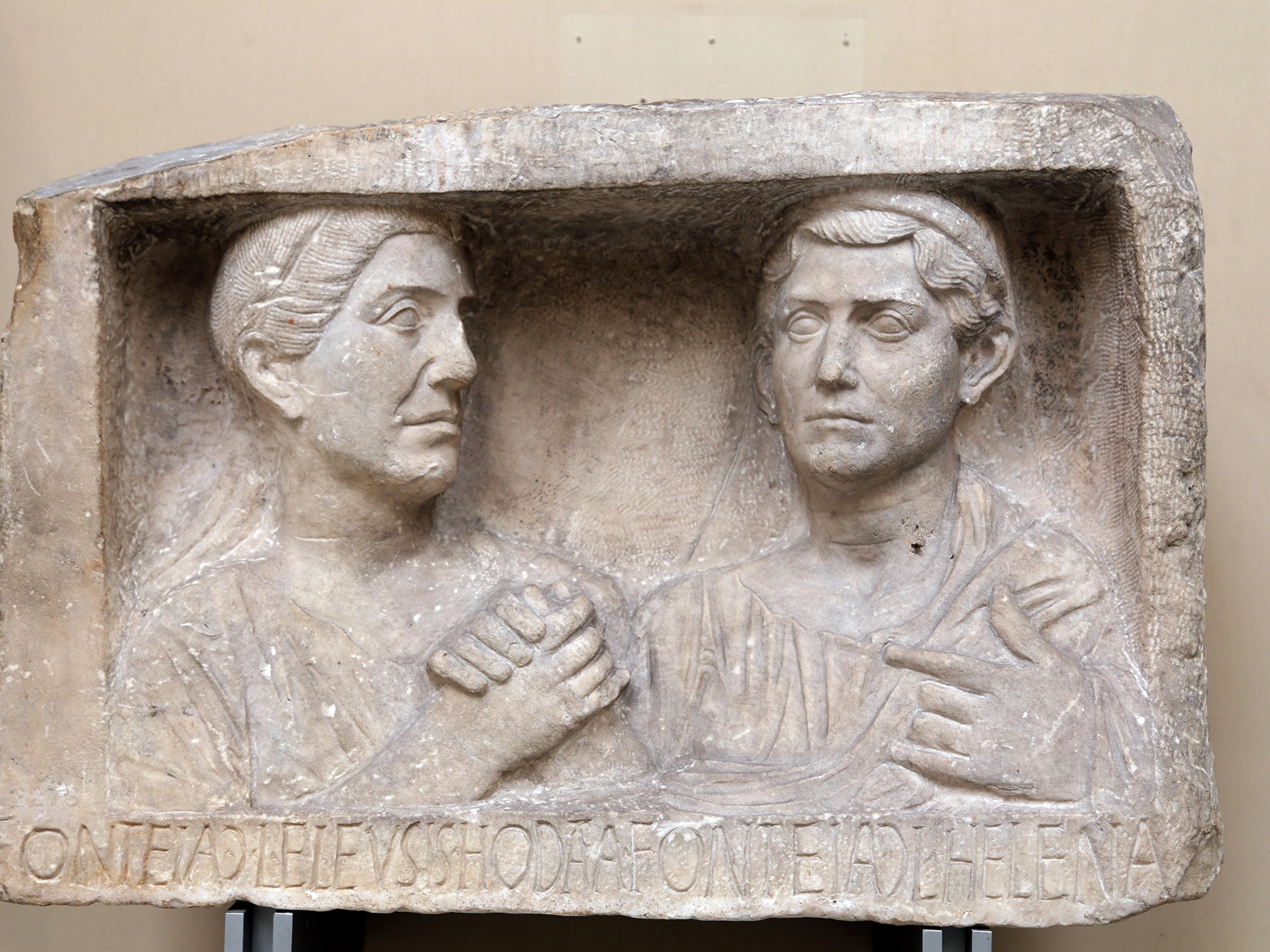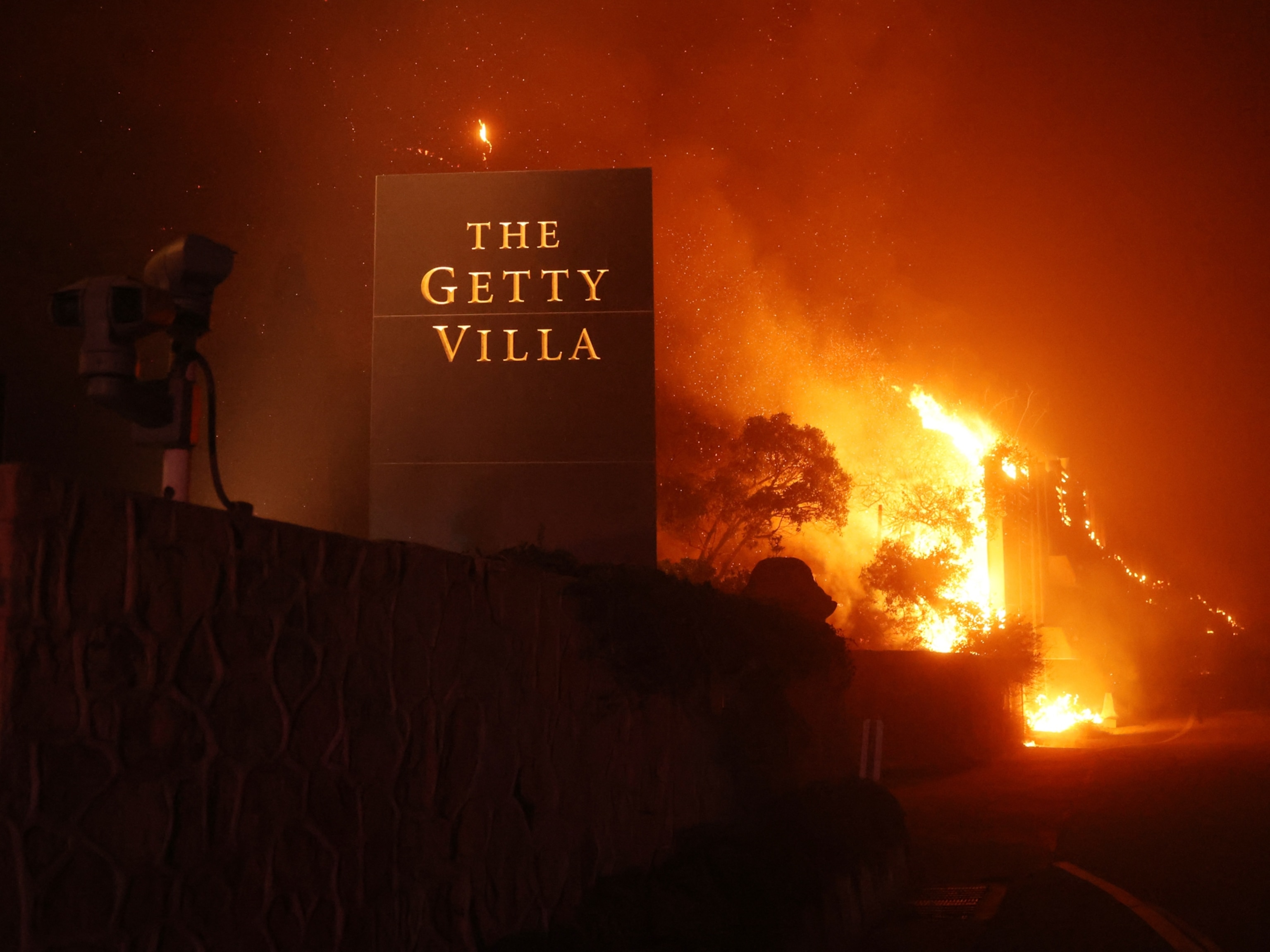The destruction of this U.K. tree prompted outrage—and now, prison sentences
A lone tree growing along an ancient Roman wall was a beloved fixture in the landscape. Why did the Sycamore Gap tree’s illegal felling spark so much emotion?

In the early hours of September 28, 2023, an act of violence and vandalism shocked the U.K.
The next day, news of the attack dominated social media and mainstream news coverage, leading to outpourings of grief, fury at its senselessness, and pilgrimages to the remote stretch of countryside where the crime took place.
This wasn’t a human tragedy.
In the dark of night, a solitary sycamore tree was cut down at an iconic stretch of an ancient ruin known as Hadrian’s Wall in Northumberland in north east England. The wall is nearly 2,000 years old and had once marked the edge of the Roman Empire. The sycamore tree that grew where the ancient wall dipped between two hills was aptly named the Sycamore Gap tree.
Two men stood trial for the crime, Daniel Graham and Adam Carruthers. In May, they were found guilty on two counts of criminal damage and each recently received prison sentences of four years and three months. They were accused of illegally cutting down the tree with a chainsaw, video of which was filmed it on Graham’s phone, say prosecutors.
When the case against them was brought to trial, public outrage was still so acute that the judge warned the jurors to set emotion aside. It had been, as prosecutors later argued, a “moronic mission” for no other reason than to cause distress. The British public wasn’t willing to forgive.
So why did the loss of a single tree matter so much?
Walking the wall
The answer seems to initially lie with the wall next to it; the charges against Graham and Carruthers weren’t just about the tree, but the damage they’re accused of causing to a major tourist attraction and UNESCO World Heritage site.
“Hadrian’s Wall locates us in the world,” explains historian Josh Provan. “People in London won’t know the names of Northumbrian towns, but they’ll know Hadrian’s Wall. It’s not just a lovely part of the world, it’s historically significant for the study of Britain, of empires, of ancient history.”
The Sycamore Gap tree was a relative newcomer. It was planted around 150 years ago, in a small gully where the Roman wall follows the groove of the Pennine hills, otherwise surrounded by stark, barren heathland. It was known to millions worldwide, not only as a landmark for hikers walking the length of the wall, but also as where Kevin Costner fought Guy of Gisbourne in Robin Hood: Prince of Thieves.
The tree’s comparative youth didn’t make it less beloved.
“Trees live on a different timescale to us,” says Wyl Menmuir, the author of The Heart of the Woods, which examines our relationship with nature. “There are stories about oak trees where Charles II hid, or there’s the Ankerwycke Yew, under which Henry VIII is said to have courted Anne Boleyn and Magna Carta was signed. The history doesn’t bear scrutiny, there’s no evidence it happened. But we’ve attached a story to those trees. We can feel the connection to that important moment.”
The tree belonged to the wall; it didn’t matter if it was there when Romans legions stood vigil almost 2,000 years ago.
Historical resonance alone can only partially explain the emotional connection between a tree and those who admire it.
Last April, British restaurant chain Toby Carvery was forced to apologize after cutting down a 500-year-old oak tree in the London borough of Enfield. The owners had acted on the advice of tree surgeons, who warned the split and dead wood were dangerous. No criminal activity had taken place. Even so, within hours campaigners were planning a boycott of the restaurant, and the local council was threatening civil action.
Far less celebrated trees are just as protected; in England and Wales, councils can instate Tree Preservation Orders, barring woodland from destruction, and a tree’s cultural heritage is only one of the criteria considered.
Trees stir something deeper inside us.
Their import extends to all countries and religions, from the Tree of Knowledge in the Garden of Eden; to the Bodhi tree where Buddha attained enlightenment; and Yggdrasill, the ash tree that supports the world in Norse mythology.
“Trees have always been important across cultures,” says Provan. “If this had happened in Japan, this would have been immensely important; in Shinto, it would have destroyed the home of a God. In the West, we bring in Christmas trees to celebrate the end of the year. Trees are highly significant figures in any landscape.”
Memories of bark and branch
Landscape itself may be the final part of the equation; we recognize trees for their beauty, as an intrinsic part of our world.
“Architects and designers, all the way back to [landscaper] Capability Brown in the 18th century, knew the power of creating spaces with trees,” says Provan. “In cities, we think we must contrive nature because we think we’re separated from it. But you don’t have to look very far to see that isn’t the case.”
Provan believes walking through a felled forest is the closest thing to a war zone. Something about cutting down a tree reminds us that humans bring destruction. We feel like trespassers. We have taken and not given back.
When a lone tree is similarly destroyed, the sense of tragedy can be even more profound.
“We sometimes don’t see the trees for the woods,” Menmuir says. "During the construction of [a high speed rail line in southern England], some phenomenally old trees were felled, which were probably more important in terms of biodiversity, but where they were meant we didn’t see them. The Sycamore Gap tree was special because it was in a treeless landscape.”
Its solitude, not its history or heritage, Menmuir notes, created a stark contrast in the landscape that made the Sycamore Gap tree iconic.
“Over time, people have attached memories to that tree,” Menmuir says. “There have been wedding vows beneath it, family picnics, blazing rows. The tree became a holder of those memories. When it was felled, it was like an attack on the memories of those people.”
The legacy continues
The case against Graham and Carruthers will grant some closure. The jury’s verdict was unanimous, and the evidence overwhelming: it included their own footage, a chunk of the tree they had kept as a memento, and incriminating social media posts. In delivering her sentencing decision, Judge Christina Lambert called the felling "sheer bravado."
Yet trees can be reborn, and the act could lead to a greater legacy than the tree could have managed alone. Shortly after its destruction, the Sycamore Gap tree began to grow saplings around its stump.
They have since been taken by the conservation nonprofit The National Trust, and 49 of them— one for each foot the tree stood before it was felled— will be given to community spaces around the U.K., from national parks to schools and community gardens. They are being called Trees of Hope.
The same human spirit can be seen at the crime scene.
“‘I went back there last year,” Menmuir says. “I walked up to the Sycamore Gap and just listened to other visitors. People had come there to talk about the tree and share the memories they had. There were a group of cyclists who were riding the length of Hadrian’s Wall. They had stopped, and one of them had his camera out and was taking photographs. His friend asked him why; there was nothing to see in the picture. And the cyclist just said “I don’t know. But I feel like I need to.”’








